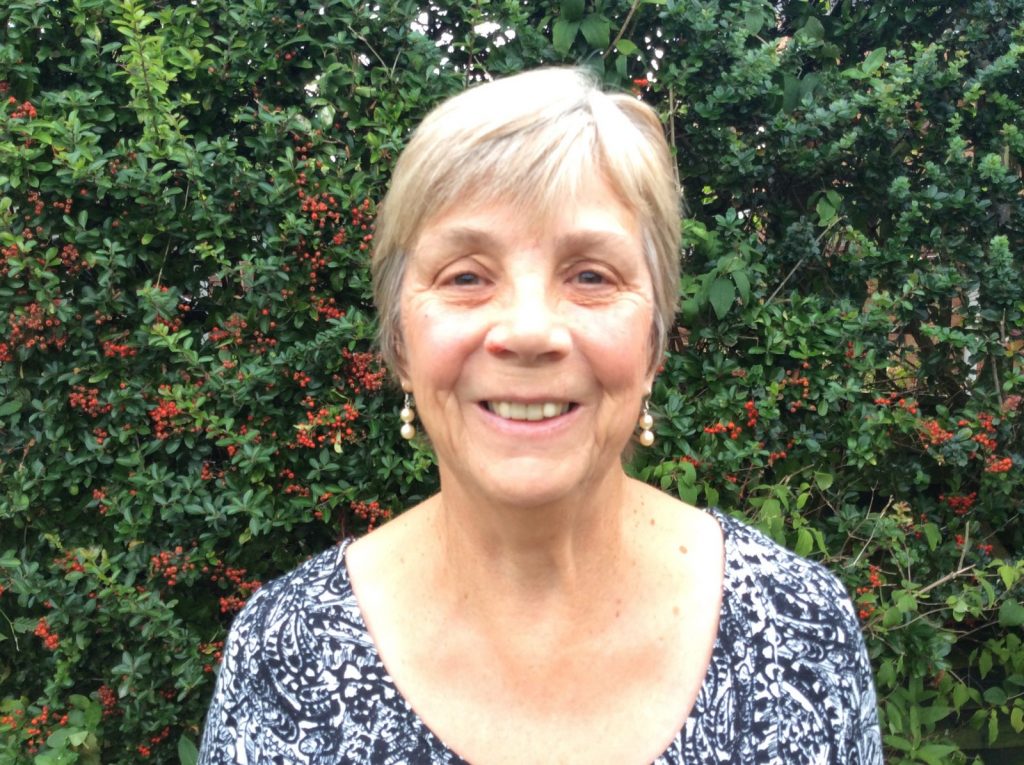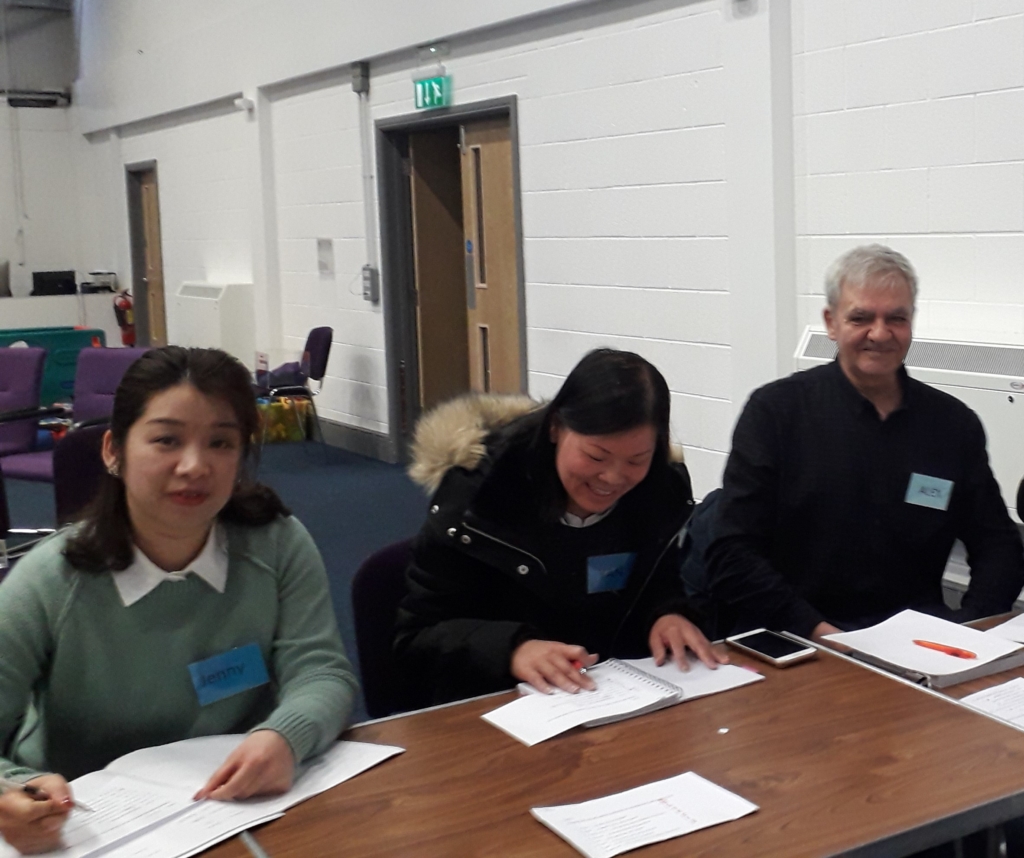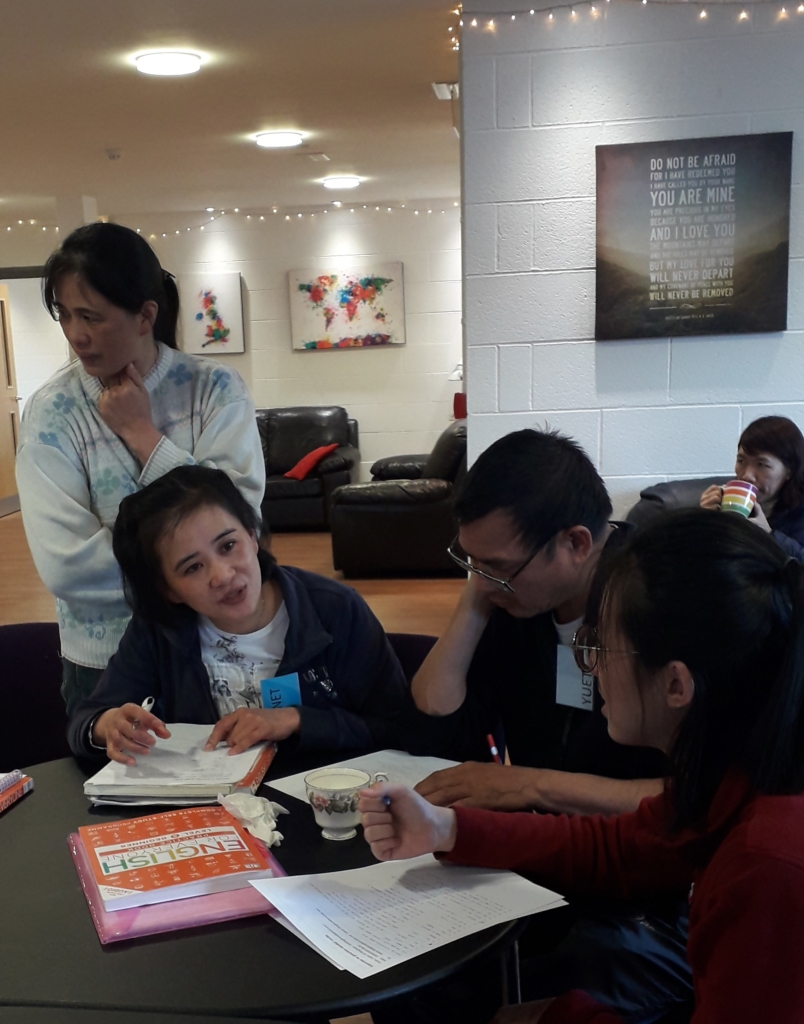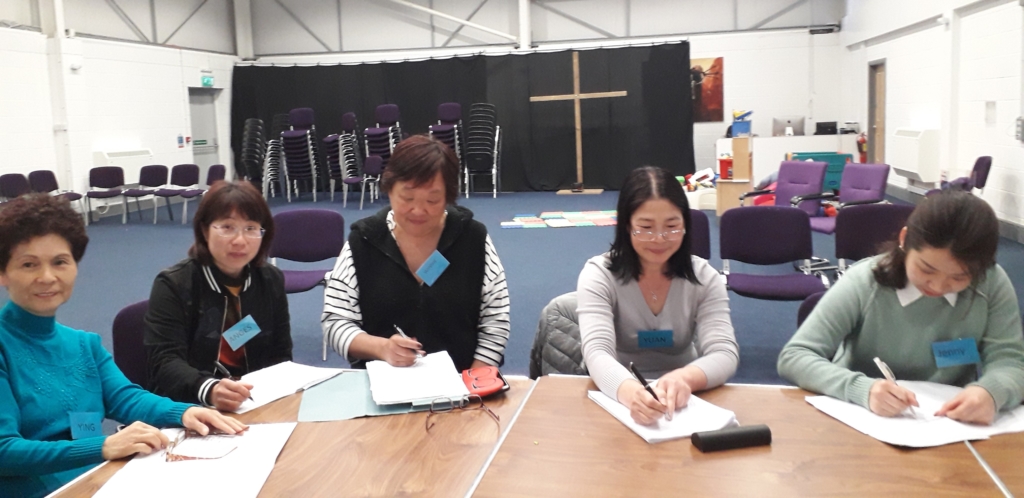You might think that the only way to use a TEFL certificate is to teach English abroad or to teach English online, but you’d be wrong. Meet Audrey and learn about the unique way that her TEFL certificate prepared her for her current volunteer project—working with refugees in England to improve their English language proficiency.
You use your TEFL certification in a unique way—as in, you’re not currently “Teaching abroad” right now, per se. Give us more details about your current work!
We are running a learning centre for foreign students from all over the world. It was established in September 2018 from a
Classes are held every Monday and Wednesday mornings, and there are extra lessons on Fridays to help those who are struggling. We have 4 classes ranging from “beginners”, to “advanced” levels, according to need. We meet for coffee at 9.30am and then have two teaching sessions plus a second coffee break. We are averaging 30 students both on Mondays and Wednesdays.

What TEFL courses did you complete? What were the most helpful things that you learned/practiced throughout your TEFL training?
I completed The Premier TEFL Advanced 120hr online course. The three most helpful things I learned put into practice were
- Planning lessons and writing a lesson plan
- Watching the videos and teaching styles
- It reinforced how much I already knew which gave me confidence to teach

Teaching refugees and immigrants is honourable work. What are some challenges that you have faced and how have you overcome them? What have you learned for future similar situations?
I have been teaching at the beginner’s level with students who had no English skills, so my comments are based on my experience only, and I have only taught Syrian and Chinese students. The other classes are more advanced and will teach more complicated grammar, interview techniques, etc.
The challenges have been:
- Pronunciation is difficult for the Syrians and the Chinese as English language is often not spoken as it is written. I use flash cards and cover up silent letters or write phonetically on the whiteboard. Repetition of certain sounds is important.
- The students have had to learn a new alphabet and formation of their letters. They also have to learn to read and write in a different direction. We use worksheets for letter formation and direction. (It’s fascinating watching them write!) Time and patience are very important for these basic tasks.
- Some English words have no meaning in their first language. Sometimes, everyday things to us, do not exist in their country of origin. Pictures help to demonstrate what words cannot explain. I have found a site which puts English words with Arabic and/ or Chinese translations. The students also use their phones to translate and communicate what they want to say to me or to find the words in their own language so they can understand what I am trying to say.
- It is sometimes difficult to know at what level to pitch the content of the lesson as they are intelligent folk, but basic vocabulary and construction of sentences has to be fairly simple to start with, and has to be adapted as they progress.
- Being sensitive to cultural differences is vital. Generally, I learn things at each lesson and try to make improvements for next time. We have fun and lots of laughter. They are delightful people and are so keen to learn.
ProTip: For free lesson activities for your classroom, grab this classroom activities ebook.

What advice do you have for individuals considering using their TEFL certificate in a non-traditional way to use their skills in their home communities?
Be prepared to adapt and adjust your teaching to the needs of your students. Enjoy your lesson time and make it interesting and related and useful to life. Find out what your students want to learn.

Can you share with us a favorite story or two from your time as a volunteer ESL teacher in England?
One day we were talking about jobs. I explained I had been a nurse and asked them what jobs they did in their own countries. They produced pictures on their phones showing themselves at work and the pride they had in their skills. One was an electrician and his photograph was of him in his shop full of amazing lights. Another man had worked with tiles. The pictures showed beautiful designs on walls and floors. The ladies too had careers.
One lady had designed and made crafts and was talented at sewing. It is very humbling to think about what they have had to give up and leave behind. To be able to help in this small way in introducing them to our language and lifestyle is very rewarding.
We all hope it will be part of their journey in building new lives for themselves where they can feel valued and be released into using their talents and skills again. We live in a very privileged country!
If Audrey’s amazing story was up your alley, check out these blogs for more amazing TEFL stories:
- Meet Sara – Living Her Best Life As A Teacher in Brazil 🇧🇷
- TEFL Interview with Seth in Shanghai 🇨🇳
- DIY Teaching Resources for Your ESL Classroom
The post Interview With Audrey – The TEFL Superhero appeared first on Premier TEFL.



